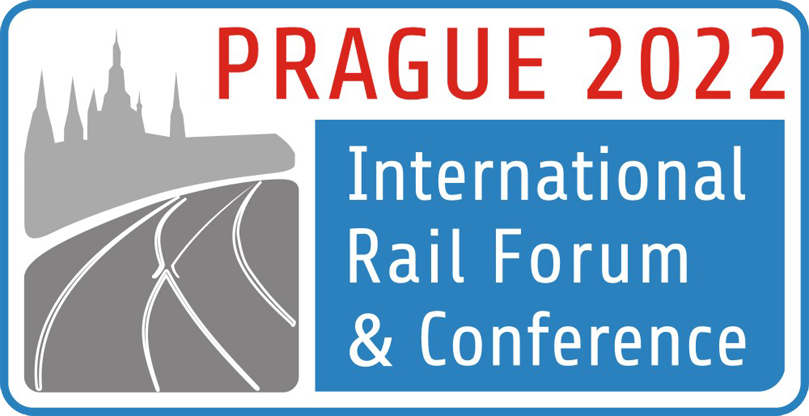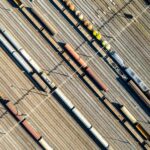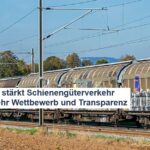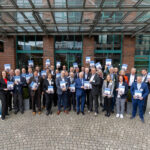Rail is not exactly famous for its willingness to innovate. This must and will change if it wants to remain sustainable as a transport mode. At the 7th International Railway Forum IRFC 2022, the experts presented a wide range of initiatives, innovations and reorganisations. We have summarised and critically appraised the most important ones here.
This is what it’s all about:
- Implementing the Green Deal requires innovation, new technologies and a comprehensive modernisation of the rail sector
- The scalability of innovations can only be achieved through cooperation and coordination.
- Switzerland must not miss the boat on EU innovation programmes
Under the Czech Presidency of the Council of the EU, the EU Minister of Transport hosted the IRFC in Prague from 5 to 7 October 2022. The motto of the congress was: “Building a new generation of railways together”. The Czech Minister of Transport, Martin Kupka, emphasised the key role of railways for the successful implementation of the Green Deal. With this, the EU has defined a clear answer to the advancing climate change. Traffic and transport in Europe are to become CO2-neutral by 2050. With the 2050 climate targets, the Federal Council is striving to replace fossil fuels in Switzerland within a comparable timeframe.
For a few years now, a paradigm shift has been taking place in the rail sector. Politicians are setting deadlines and issuing concrete mandates to the sectors. In order for the European railways to be able to react according to the mandates, more cooperation is needed in the further development of new technologies and their implementation. The technical pillar of the 4th railway package forms the basis for the creation of the planned unified European railway system.
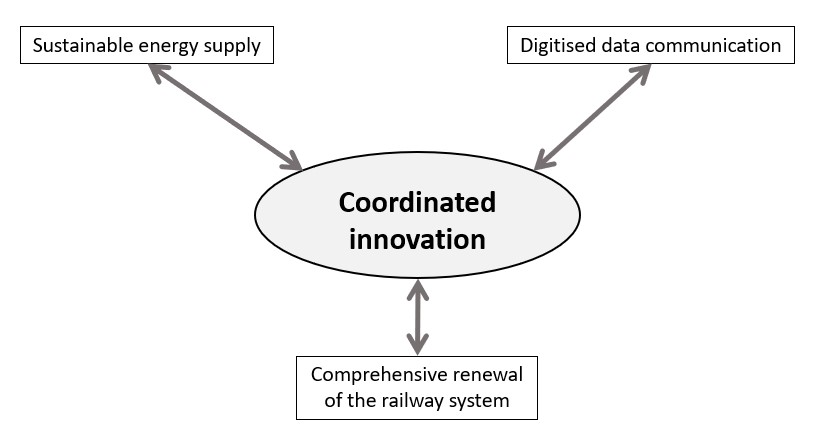
Until new technologies have reached their application maturity, it is first necessary to coordinate innovation (cf. figure) and to conduct targeted research to develop the scientific basis. To this end, the EU has built up efficient and competent organisations in recent years: The “Horizon” programme leads and finances various research projects. Thanks to cross-sectoral networking, the results and findings should be made available to a wide range of users in a timely manner. Within the framework of the innovation partnership Europe’s Rail Joint Undertaking (EU-Rail), innovative new approaches based on research results are given concrete form. The important projects for rail operations and technology are based on the two pillars “System Pillar” and “Technical Pillar”. The Railway Agency ERA defines the new uniform specifications for European railway applications and thus ensures interoperability. Thanks to this pooling of knowledge, solutions ready for international application can be developed in a short time.
Energy of the future is renewable
Until now, industrialised economies have mainly used fossil fuels. For a long time, these were available on the international market at low prices. With the Green Deal, the EU wants to reduce transport-related emissions by 90% by 2050 and shift 75% of the transport volume from road to rail or waterways. The important energy sources of the future are hydrogen and electricity, both produced from renewable resources.
Modern data communication is digital
Industrialised processes function successfully when the necessary data is directly and immediately available to all participants. The current use of data is still limited; for many sub-processes, the data is collected again and again. Such solo efforts are resource- and time-intensive as well as error-prone. In future, data should be available to all authorised participants without media discontinuity and in real time. Direct access to data is central to the realisation of automated processes, as is effective data protection. Cyber security is becoming the core issue of modern data communication.
Reorganisation of the railway system called for
Railways were essential to industrialisation in the 19th and early 20th centuries. It was not until the middle of the 20th century that road and air transport pushed back the railways in transport thanks to their successful innovative steps. The decisive factors were intramodal competition and rigorous customer orientation. The customers’ most important question was: How can we fulfil our needs more easily, more comfortably and more cheaply? And they received suitable answers on the road.
Today, the railways must finally ask themselves the same question. The railway is an efficient and resource-saving transport system with numerous advantages. In a direct comparison of the energy required, the electrified railway is the clear winner over the road. Under the same general conditions, the railway requires 10 times less energy than the road. Important European railway lines are already electrified, so that the required traction energy can be used with high efficiency. Today, a widely ramified network of lines connects the important regions of Europe, a large part of the lines are standard gauge, only in a few European regions are deviating gauges in operation today.
In order for the planned shift of traffic to the railways to actually be realised, a cultural change in the railways towards intramodal competition and customer orientation is first needed, as well as a comprehensive and systematic renewal of the railway system:
- TEN‑T: The EU has defined the trans-European rail network to connect all major European centres. Trains are to be able to run without obstacles on a uniform, harmonised infrastructure; on secondary lines, hydrogen or battery operation can ensure the desired CO2 neutrality. The expansion of the railway network is being carried out with two different emphases: For passenger transport, a high-speed network is to be built that connects the important centres and enables attractive travel times. For freight transport, the necessary train paths are to be made available so that rail freight transport can grow in accordance with the political requirements. The freight railways must more than double their transport capacity in the coming decades. They can only achieve this ambitious goal with the help of innovation. In addition, the corridor managers must be equipped with comprehensive competences so that the current cherry-picking of the national, integratedly managed state railways comes to an end.
- Interoperability and standardisation: The various European railway systems are still subject to a multitude of often different national regulations. Compliance with these still significantly restricts free cross-border rail traffic and enables unfair competitive advantages in the national market. Despite the technical specifications of interoperability (TSI), national regulations still massively hinder cross-border traffic. The EU has made the elimination of these national rules an important leadership task with the “rules cleaning-up programme”. This is a crucial programme of the technical pillar of the 4th EU railway package to create the Single European Railway Area (SERA). While the European Railway Agency (ERA) is responsible for the further development of the Technical Specifications for Interoperability (TSIs), the railway sector has to update and develop the related standards and norms. In the desired ideal case, the TSIs and the standards should sufficiently specify all railway subsystems in all participating European countries. Switzerland also relies consistently on the TSI in the standard gauge sector. It has adopted the first elements of the technical pillar of the 4th EU railway package within the framework of the current overland transport agreement. As the dialogue between the EU and Switzerland is currently at a standstill, the planned continuation is unfortunately not possible at present.
- Digital automatic coupling (DAK): The railways must replace their historically grown but outdated standards such as the classic screw coupling in favour of modern digitalised systems – such as the DAK4 – across the board. This forms a decisive basis for future comprehensive automation in the rail sector. Even more important, however, is the networking of all actors along the entire logistics chain – beyond the mere rail run – thanks to the possibilities of digitalisation. Freely accessible data and booking platforms open up unimagined increases in efficiency and quality. The members of the VAP and SBB are also actively contributing to the success of this important project with their know-how.
- Energy: In the field of energy, the necessary processes for the CO2-neutral production, distribution and simple use of hydrogen are being worked on. For operation on longer, non-electrified railway lines, hydrogen is a promising energy source that can quickly replace fossil fuels.
Marathon with hurdles
With the Green Deal, the EU has defined a comprehensive programme to create a CO2-neutral Europe. However, the member states have different starting points, priorities and interests. Consequently, the implementation of this ambitious programme will have to overcome a number of hurdles. It remains to be seen whether the national interests of the state railways can be sufficiently set aside in favour of a common European solution.
The railway is to play a key role in European passenger and freight transport in the future. It has some convincing advantages. But it must also overcome an aversion to renewal, change and competition that has developed over many decades. The compartmentalisation of markets, especially by the state railways, continues to be a major obstacle in many places. By sticking to national regulations, often under the pretext of safety considerations, state railways want to continue to protect themselves from unwanted international competition. It is up to the member states to help the European idea achieve a breakthrough and to put a stop to unfair practices by their state railways.
The rail sector must set new standards through innovation. It must standardise and streamline its regulatory environment internationally. When developing new systems, large suppliers to the rail sector must not try to gain a one-sided market advantage through exclusive, incompatible products. For sustainable migration success, the sector needs compatible, mature and reliable innovative products. The manufacturers have not exactly distinguished themselves in this respect in recent years.
Whether the intended shift of transport to rail will be feasible on the planned scale depends on the financial resources that can be deployed. There will be no bulging EU coffers for the migration from which the individual companies can help themselves as needed. The individual member states will have to contribute to the renewal and expansion of the railway infrastructure with substantial start-up financing. This also applies to Switzerland. Core projects such as the DAK must be internationally coordinated, otherwise their effect will fizzle out without a sound.
Switzerland is part of Europe
Switzerland, too, can only gain from active participation in these EU programmes. The Swiss standard gauge network with its major transit axes contributes to the trans-European rail network of the EU. It forms an important part of the uniform interoperable European system SERA. Since many of the Swiss transports are cross-border, interoperable solutions are indispensable. Switzerland has fulfilled its planned target with the continuous expansion of the north-south transversals as announced. The Swiss railway network must be further expanded for domestic traffic in order to be able to cope with the growth target in freight transport in the future. Our experts can actively make valuable contributions to development and compete with the best internationally. Our railway companies can strengthen their market position with new concepts, especially in import and export traffic.
The VAP supports joint activities to further develop the rail sector into an important partner in the multimodal transport system. In this context, cooperation at European level and intramodal competition is a crucial prerequisite to achieve the political goals on time. In terms of transport, we are so closely linked with neighbouring countries that our economy needs obstacle-free cross-border traffic and transport services. From an energy point of view, rail is predestined for longer distances. The political differences between Switzerland and the EU continue to hinder the urgently needed international cooperation. The railway industry is well advised to actively seek and cultivate professional exchange despite the hurdles. We can only have a successful railway future together.
